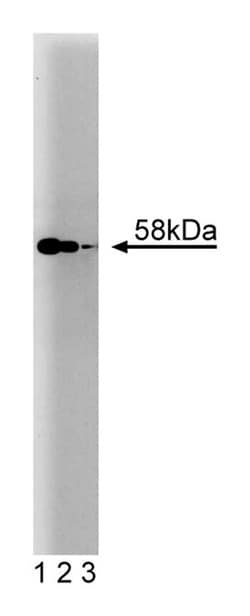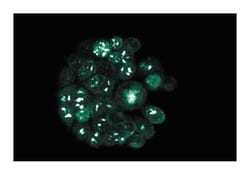Learn More
hHR23B Mouse, Unlabeled, Clone: 16, BD
Mouse Monoclonal Antibody
Supplier: BD Biosciences 611018
Description
Nucleotide excision repair (NER) is an essential element of DNA repair which eliminates unrelated DNA base lesions, including those induced by UV irradiation or chemicals. Although well defined in prokaryotes, eukaryotic NER is complex and involves at least two distinct subpathways. The transcription-coupled repair subpathway eliminates DNA lesions just prior to transcription. This is important for the removal of lesions for which the second pathway, global genome repair (i.e. covers the entire genome), is unable to repair. Individuals with defects in both pathways may suffer from xeroderma pigmentosum (XP), a condition with increased incidence of cancer in skin and internal organs. Mutations in seven genes result in human XP. However, one of these, XP-C, affects only the global genome repair pathway. The XP-C protein interacts with hHR23B, the human homolog of RAD23, an essential component of yeast NER. The XPC-hHR23B complex is required for excision of thymine dimers. In addition, hHR23B contains an N-terminal ubiquitin-like domain that allows for proteasome interaction. Thus, hHR23B may be an essential component of NER and mechanisms of DNA repair.
Immunofluorescence, Western Blotting

Specifications
| hHR23B | |
| Monoclonal | |
| 250μg/mL | |
| Aqueous buffered solution containing BSA, glycerol, and ≤0.09% sodium azide. | |
| Human hHR23B aa. 73-193 | |
| 50 μg | |
| Cell Biology | |
| Canine, Human | |
| IgG1 |
| Immunofluorescence, Western Blot | |
| 16 | |
| Unconjugated | |
| Mouse | |
| Affinity Purified | |
| RUO | |
| Primary | |
| Store undiluted at -20°C. |
Your input is important to us. Please complete this form to provide feedback related to the content on this product.
For Research Use Only.

